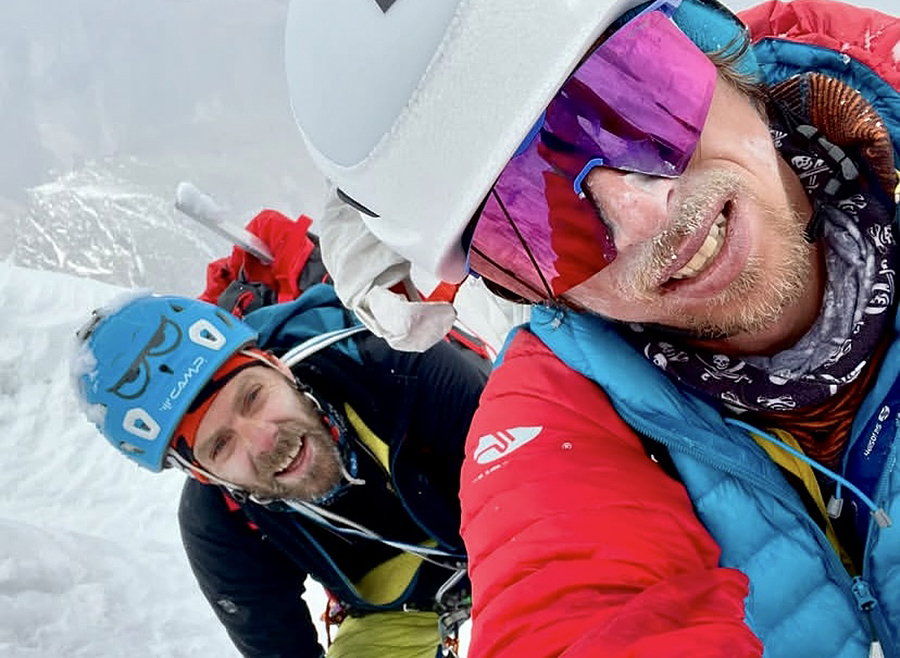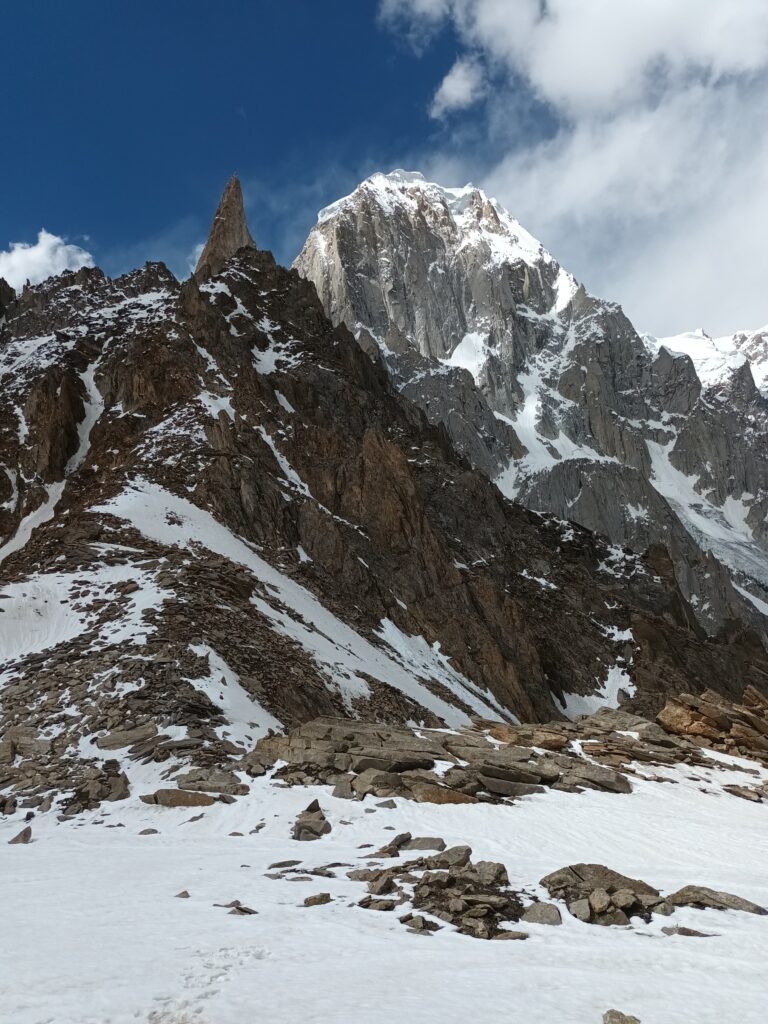Pakistan’s Karakoram, June 21, 2025 — In Pakistan’s Karakoram range, Czech alpinists Radoslav Groh and Zdenek Hák have accomplished the first ascent of the 6,270-meter Hunza Peak’s imposing 3,000-meter Southwest Face. The June 18 ascent is a major accomplishment in contemporary alpine climbing.

Zdenek Hak, left, and Radoslav Groh on Hunza Peak. Photo: Radoslav Groh
The pair conquered the ascent in a single, continuous 20-hour push, in true alpine style, a straightforward strategy characterised by speed, efficiency, and independence, reported by Explorerweb. After two to three days of hiking across difficult terrain, they arrived at the Batura Glacier, the starting point of their hitherto unexplored route. In honour of the Islamic holiday that coincided with their summit, they named their line “Eid al-Adha”.

Hunza Peak. Photo: Radoslav Groh/HudySport
A Rare Glimpse of Hunza Peak
Since its initial reported ascent in the summer of 1991, Hunza Peak has experienced comparatively few ascents. Following an earlier attempt on nearby Ultar Sar, British climbers Craig Jones and Mick Fowler created the first route to the summit via the southwest ridge. They embarked on a three-day alpine-style excursion along the ridge, beginning at the Hasanabad Glacier and traversing a col between Bublimoting and Hunza Peak.
Although their exact path is unknown, a Swedish crew also made it to the top that year.
Harry Grun, Klaus Bonazza, and Jakob Karner, an Austrian trio, tried the lower Southwest Face in 2008 but were forced to withdraw after becoming stranded on the 1,200-meter wall due to heavy weather.
Here are some rare-angle shots of Hunza Peak, offering a unique perspective on this elusive summit. With only two known routes, both climbed in alpine style during 1991—first by a Swedish expedition, and then by a British team including Caradog Jones and Mick Fowler—Hunza Peak remains one of the lesser-photographed giants of the Karakoram.


These photos also capture a close-up of the iconic Bublimotin (Ladyfinger Peak), a sharp, snowless granite spire standing in stark contrast to the surrounding snowy summits. Despite its proximity, it has little prominence above the saddle connecting it to Hunza Peak, yet remains one of the most recognizable landmarks in the region.
